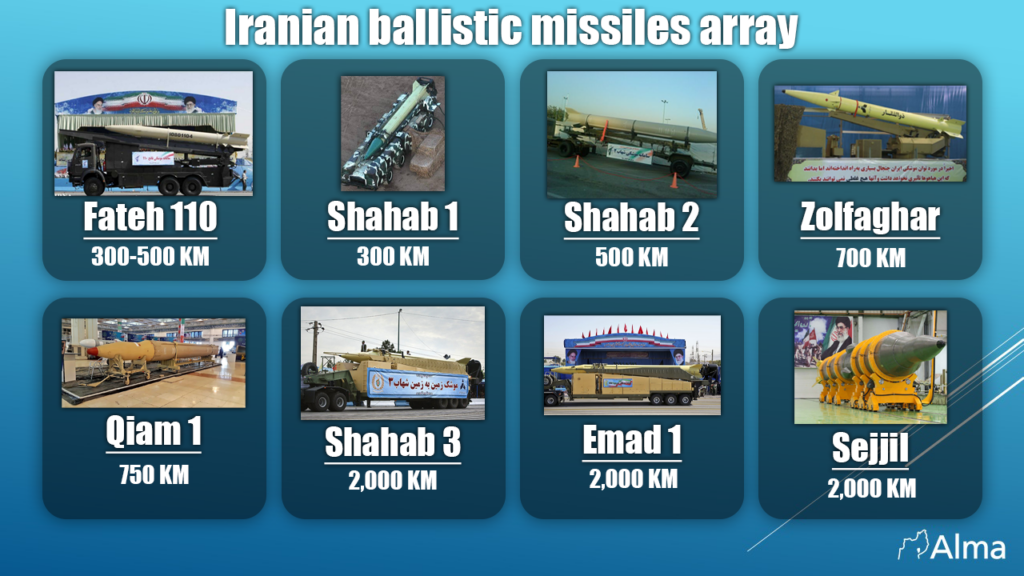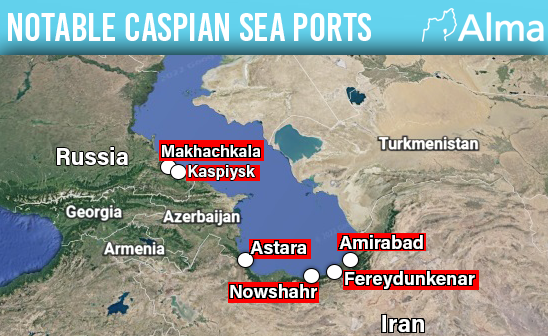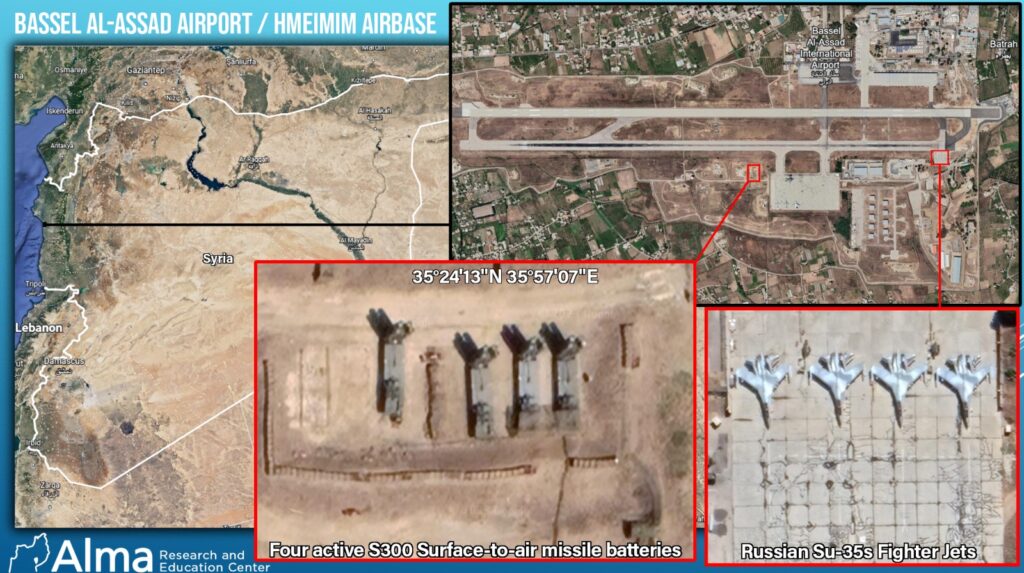Iran is reportedly stepping up its missile and UAV deliveries to Russia, indicating yet another tightening of strategic relations between Moscow and Tehran.
This will likely have negative influences on Russia’s stance towards Israel’s campaign in Syria to roll back Iranian enrichment, as Russia continues to deepen its dependency on Iranian firepower.
On February 21, Reuters reported that Russia received some 400 Iranian ballistic missiles, significantly enhancing its firepower capabilities amid the ongoing conflict with Ukraine.

Many of the missiles are, according to the report, members of the Iranian-made, solid fuel Fateh-110 family, and its Zolfaghar variant, known for their precision and extended range capabilities. The report did not state whether these are guided variants, which come with guidance systems and control fins.
Fateh 110 missiles, with warheads of 500 kilograms, have a range of up to 350 kilometers, while the Zolfaghar variant has a 700 kilometer range, with a warhead of around 600 kilograms. Notably, a large portion of Hezbollah’s estimated 5,000 long-range projectiles is made up of Fateh 110s, meaning that the Iranian arms proliferation network is reshaping both the Middle East and eastern Europe.
These acquisitions come at a time when Russia’s ballistic missile arsenal has been notably depleted due to the ongoing military engagements in Ukraine.
According to reports, Iran’s shipments to Russia have been conducted discreetly, with at least four batches of missiles delivered through a combination of Caspian Sea ship transport, and an air route.

This will give Russia the ability to launch strikes from further distances, potentially and put a new strain on Ukrainian air defenses, particularly the U.S.-supplied Patriots. The same threat is hovering over the Israeli home front, posed by the combination of Hezbollah’s Iranian guided and unguided Fateh-110 arsenal.
In what could be an important performance test of the Fateh 110 missile, and a display of their capabilities, there are unconfirmed reports claimed that Iran fired such projectiles in January on targets in Iraq’s semi-autonomous Kurdish region in the Irbil area.
Iran struck targets it said were ‘linked to ISIS’ in the Idlib region of northwest Syria in mid-January too.
Also last month, Iran fired Keibar Shekan missiles at targets in Pakistan – these are a large variant of the Fateh-110 family, first unveiled in 2022, with a claimed range of 1,450 kilometers.
Meanwhile, after launching a report 3,700 Iranian-made Shahed unmanned aerial vehicles at Ukraine during the war as of December (according to Ukrainian Air force estimates), recent reports have indicated that Russia could be attempting to build 10,000 Iranian-designed UAVs a year on its own soil.
According to a February 7 report in Defense One, plans for a massive domestic production of Shahed 136 suicide drones, with a range of some 2500 kilometers, and carries a 40 kilogram warhead, were revealed by a hacking group, which says it stole files from a company (Sahara Thunder) controlled by the Islamic Revolutionary Guards Corps.
The documents’ authors appear to have attempted to disguise the nature of the systems they discuss, describing them as various kinds of “motorboats.”
“One of the documents, dated ‘November 2022,’ describes a trip to Iran earlier that year [2022] by employees of Alabuga, a state-owned Russian company that manages a large industrial park in Russia.
In August 2023, the Washington Post reported, citing its own leaked documents, that Alabuga has a central role in a plan to build 6,000 Shahed-136sAlabuga is headquartered in the Russian Tatarstan region, where Russia is reportedly planning to mass produce Iranian-designed UAVs.
“The file posted by Prana [the name of the hacking group] said Russia had agreed to buy the technology and components to assemble 6,000 ‘Dolphin 632 boats.’ It also said Russia would produce up to 10,000 a year once it had received all the relevant technology. But numerous details in the Prana files suggest that these ‘boats’ are in fact UAVs. The ‘November 2022’ document, for example, lists such components as ‘avionics,’ jet-assisted take-off, and a Nassir-2 anti-jamming system,” said the Defense One report.
The documents revealed that the Iran and Russia negotiated a price of $193,000 per assembly of each Shahed – 136 in Russia – six times higher than the previously estimated cost of producing the system.
The leaked documents also suggest that Russia is seeking to produce the Shahed 107 surveillance (107B) and attack (107C) versions, and Shahed 238 turbojet attack UAVs.
The documents also appear to refer to Shahed 236 seeker variants.
The 236 models, which come with a target acquisition system, are priced at $900,000 per unit, with Russia reportedly interested in some 2,000 of these variants.
Some of the leaked documents appear to shed light on an extensive and growing Russian – Iranian arms proliferation system, with references to companies that are registered in a third party country.
The documents go into detail about possible production schedules for each category of drones, with production rates ramping up to hundreds per month.
In August 2023, the Washington Post reported a billion-dollars weapons deal in which Russia would produce 6,000 Iranian-designed UAVs in its Tatarstan region by the summer of 2025.
These developments all suggest that as the Irania weapons proliferation network nourishes Russia, just as it does Hezbollah in Lebanon, the Houthis in Yemen, militias in Syria and Iraq, and as it did Hamas and Palestinian Islamic Jihad in Gaza, Moscow will increasingly come to represent Iranian interests in Syria, where Israel has been engaged for the past 13 years in a shadow campaign to roll back Iranian entrenchment.
Russia maintains air squadrons at its Khmeimim airbase on the Syrian coastline. In January 2024, the Russian Aerospace Forces announced the start of flight patrols in southern Syria, near the border with Israel, though this move has appeared to have no influence whatsoever on Israeli air activities against Iranian – Shi’ite axis targets in Syria in recent months.

Israel will need to prepare for this likely shift, including the need to prepare its air force for future scenarios.






